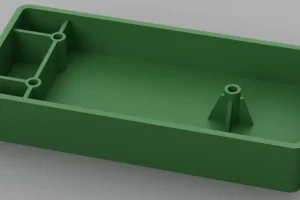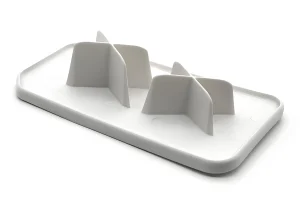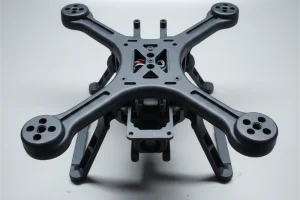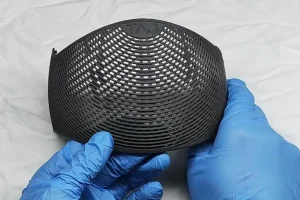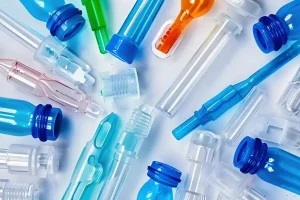Before a new mold is injection molded or when the machine is replaced by another mold for production, mold trial is an essential part. The good or bad results of the mold trial will directly affect the smoothness of the subsequent production in the factory.
Therefore, it is necessary to follow reasonable operation steps and record the useful technical parameters during the injection molds trial for the mass production of products.
Precautions before the mold test
1. Understand the relevant information about the injection mold.
It is best to get the mold design of the mold surface, detailed analysis, and the mold technician to participate in the mold test work.
2. Check the mechanical action on the working table first.
To pay attention to whether there are scratches, missing parts, loosening, etc., the mold to the slide plate action is true, water and gas pipe joints have no leakage, the mold open range, if there are restrictions, should also be marked on the mold.
If the above actions can be done before hanging the mold, it can avoid the waste of time when hanging the mold and then disassembling the mold.
3. When the mold is determined to be suitable for each action, it is necessary to choose a suitable test injection machine.
(a) What is the maximum injection volume of the injection molding machine?
(b) Whether the inner distance of the tie bar can accommodate the mold.
(c) Whether the maximum moving stroke of the movable template meets the requirements
(d) Whether other related tools and accessories for mold testing are ready.

The next step is to hang the mold after everything is confirmed. When hanging, attention should be paid to locking all the clamping plates and not removing the clamping plates before opening the mold, to avoid loosening or breaking the clamping plates and dropping the injection mold.
After the mold is installed, the mechanical action of each part of the mold should be carefully checked, such as the slide plate, ejector pin, retracting tooth structure and limit switch action is true. And pay attention to whether the injection nozzle and the inlet are aligned.
The next step is to pay attention to the mold-closing action. At this time, the mold closing pressure should be turned down, and in the manual and low-speed closing action, pay attention to see and hear whether there is any uneven action and strange sounds, and other phenomena.
The manufacturing process of lifting the mold is relatively simple, but the main thing that needs to be carefully done is that the centering of the injection mold gate and the injection nozzle is difficult.
4. Increase the temperature of the mold
According to the performance of the raw materials used in the finished product and the size of the mold, choose the appropriate mold temperature control machine to raise the temperature of the mold to the temperature required for production.
After the mold temperature is raised, the action of each part must be checked again, because the steel may cause jamming after thermal expansion, so we must pay attention to the sliding of each part to avoid strain and chattering.
5. If there is no experimental plan implemented in the factory, we suggest that only one condition should be adjusted at a time when adjusting the test injection mold conditions to distinguish the effect of a single condition change on the finished product.

6. Depending on the raw materials, the raw materials used should be baked appropriately.
7. Use the same raw material as much as possible for the trial mold and future mass production.
8. Don’t try the mold completely with inferior material, if there is a demand for color, we can arrange the color test together.
9. Internal stress and other problems often affect the secondary processing, which should be in the mold after the test to be stable after the finished product that is to be the secondary processing injection mold in the slow closing, to adjust the mold pressure, and action several times to see if there is uneven closing pressure and other phenomena, to avoid the finished product generated burr and mold deformation.
After the above steps are checked, the closing speed and closing pressure will be lowered, the safety lever and ejector stroke will be set, and then the normal closing speed and closing speed will be adjusted.
If the maximum stroke limit switch is involved, adjust the injection mold opening stroke slightly shorter and cut off the high-speed mold opening action before the maximum stroke.
This is because the high-speed action stroke is longer than the low-speed one during the whole opening stroke of the mold loading. In the plastic machine, the mechanical ejector rod must also be adjusted after the full-speed mold opening action to avoid deformation of the ejector plate or peel plate under pressure.

Before making the first mold injection, please check the following items again.
(a) Whether the material filling stroke is too long or insufficient.
(b) Whether the pressure is too high or too low.
(c) Whether the mold filling speed is too fast or too slow.
(d) Whether the processing cycle is too long or too short.
To prevent the finished product from sort shot, breakage, deformation, burr, and even injury to the mold.
If the cycle time is too short, the ejector pin will pierce the finished product or peel the ring and squeeze the finished product. This type of situation can take you two or three hours to remove the finished product.
If the cycle time is too long, the weak part of the die may break due to the shrinkage of the rubber. Of course, you can’t anticipate all the problems that can occur during a mold trial, but well-thought-out and timely measures taken in advance can help you avoid serious and expensive losses.

Main steps of mold trial
To avoid unnecessary waste of time and trouble during mass production, it is necessary to be patient to adjust and control various processing conditions and find out the best temperature and pressure conditions, and develop a standard mold trial procedure that can be used to establish daily working methods.
1. Check whether the plastic material in the barrel is correct and whether it is baked according to the regulations (test mold and production are likely to yield different results if different materials are used).
2. Clean up the material tube thoroughly to prevent the bad molten plastic material or miscellaneous material from shooting into the mold, because the bad plastic material and miscellaneous material may jam the mold.
Check whether the temperature of the material tube and the temperature of the mold are suitable for the processed material.
3. Adjust the pressure and shot volume to produce a satisfactory appearance of the finished product, but do not run rough edges especially when there are still some injection mold cavities where the finished product is not completely solidified, think before adjusting the various quality control conditions because a slight change in the mold filling rate may cause a large change in the mold filling.
4. Be patient and wait until the machine and mold conditions stabilize, even for medium-sized machines it may take more than 30 minutes. You can use this time to check the finished product for possible problems.
5. The screw advance time should not be shorter than the gate plastic solidification time, otherwise the weight of the finished product will be reduced and the performance of the finished product will be damaged. And when the mold is heated, the screw advance time should be extended to compact the finished product.
6. Reasonable adjustment to reduce the total processing cycle.
7. Run the new conditions for at least 30 minutes to stabilize, then produce at least one dozen full mold samples in a row, marking the date and quantity on the fixture and placing them separately by cavity to test the stability of the operation and to derive reasonable control tolerances. (Especially valuable for multi-cavity molds).
8. Measure and record the important dimensions of successive samples (should be measured when the sample has cooled to room temperature).
9. Compare the dimensions of each mold sample, noting.
(a) Whether the dimensions of the product are stable.
(b) Whether there is a tendency for some dimensions to increase or decrease while the machine processing conditions are still changing, such as poor temperature control or oil pressure control.
(c) Whether the dimensional changes are within the tolerance range.
If the finished product does not vary much in size and the processing conditions are normal, observe if the quality of the finished product is acceptable and the dimensions are within tolerances for each die cavity.
Note down the cavity numbers that are continuously larger or smaller than the average value to check the correct size of the injection mold.

Record the parameters obtained during the mold test
Record and analyze the data to modify the mold and production process conditions, and as a reference for future mass production.
1. Make the injection molding process run longer to stabilize the melt temperature and hydraulic oil temperature.
2. Adjust the machine conditions according to the oversize or undersize of all finished products, and increase the gate size for reference if the shrinkage is too large and the finished products appear to be undershot.
3. If the die cavity and gate size are still correct, then try to change the machine conditions, such as mold filling rate, mold temperature, and pressure of each department, and check if some die cavities are slow to fill.
4. According to the finished product of each mold cavity or mold piston shift, to be corrected, perhaps try to adjust the mold filling rate and mold temperature to improve its uniformity.
5. Check and modify the malfunction of the injection machine, such as the oil pump, oil valve, temperature controller, etc., which will cause changes in processing conditions, even if the most perfect mold can not play a good efficiency in a poorly maintained machine.
After reviewing all the recorded values, keep a set of samples to check and compare whether the corrected samples are improved.
Keep all the records of the sample inspection during the injection mold trial, including the processing cycle, various pressures, melt and mold temperatures, tube temperatures, injection action times, screw charging periods, etc.
In short, keep all the data that will help establish the same processing conditions in the future so that you can obtain products that meet quality standards.
At present, the factory often ignores the mold temperature during the mold test, and the mold temperature is not easy to grasp during the short injection mold test and future mass production, and the incorrect mold temperature is enough to affect the size of the sample, light, shrinkage, flow and under the material, etc., if the mold temperature controller is not used to be when the future mass production may have difficulties.


